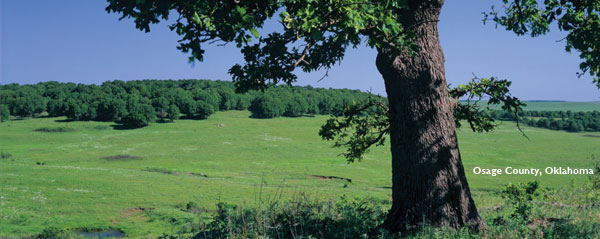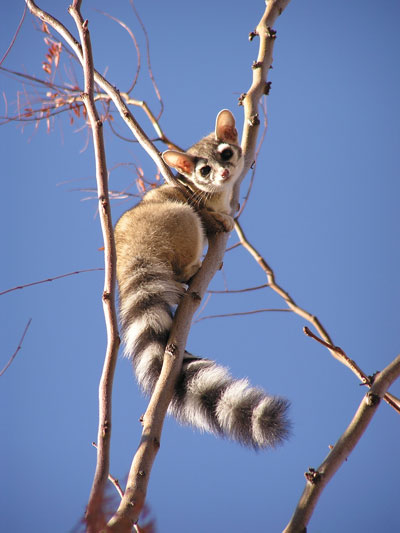|
back Home Cross TimbersGateway from forest to prairie Biodiversity of Oklahoma series |
|
Ringtail
Bassariscus astutus
|
© Craig Warren Benkman
|
The
Ringtail is a cat-sized carnivore resembling a small fox with a long
raccoon-like tail. Its bushy tail is flattened and nearly as long as the
head and body, with alternating black and white rings. These
animals are almost wholly nocturnal and spend the majority of the day
sleeping in their dens. They leave their dens at night to feed.
Ringtails eat a wide variety of foods. Birds, rodents, carrion,
reptiles and amphibians, and insects such as grasshoppers and crickets
form the bulk of their diet, although they also eat native fruits and
berries as well. The breeding season of the Ringtail is in
mid-spring. Most litters consist of two to four babies, which are born
covered with short, pale hair, unable to see and hear. By the age of
four months, young Ringtails have acquired their adult coloring. Ringtails live in many different habitats, but they prefer rocky areas such as rock piles, stone fences, canyon walls, and talus slopes. Ringtails are expert climbers, capable of climbing vertical walls to find the most protected crevices, crannies, and hollows in which to build their dens. In woodland areas, where they are less common, they den in hollow trees and logs. They have also been observed living in buildings and neighboring open edges and fields. From the Texas Parks & Wildlife Wildlife Fact Sheets. |
|
back to species list |
PDF of all species profiles
|

